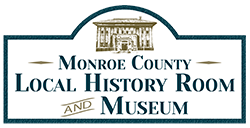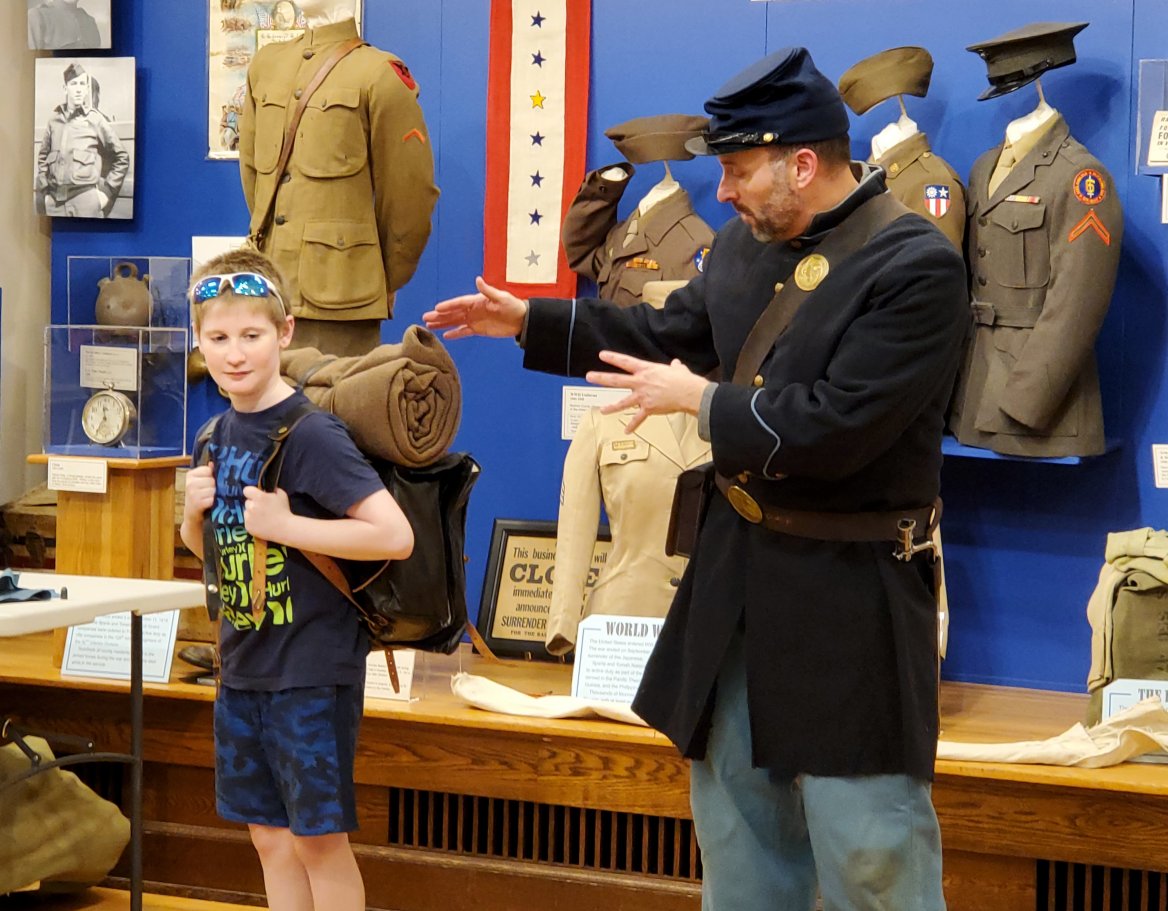Topics: Civil War; Social History; Agriculture; Technological Change
Suggested Grade Level: 3-8
Required Time: 45-120 minutes
Description:
Students will learn what being a Union soldier from Monroe County was like during the American Civil War—from the drudgery of drill to the horrors of battle. Through hands-on activities and live demonstration, students will gain knowledge of: uniforms and gear, weaponry and warfare, camp life and a soldier’s diet, death, disease, and sacrifice. Students will hear stories of real war experiences, handle replicas of Civil War items, and participate in activities that a soldier would have (eg. military drill, packing one’s knapsack).
Goals:
- Personalize the Union soldier‘s experience for each student
- Broaden the understanding of Monroe County’s contribution to the “war against the rebellion”
- Identify what the Union soldier from Monroe County would have worn, carried, and used on a daily basis
- Appreciate the sacrifice of the citizen soldier
- Understand how family and farm life was affected by the men’s absence
Wisconsin Standards for Social Studies related to the program:
- SS.BH1: Wisconsin Students will examine individual cognition, perception, behavior, and identity.
- SS.BH2: Wisconsin students will investigate and interpret interactions between individuals and groups.
- SS.BH3: Wisconsin students will assess the role that human behavior and cultures play in the development of social endeavors.
- SS.BH4: Wisconsin students will examine the progression of specific forms of technology and their influence within various societies.
- SS.Econ1: Wisconsin students use economic reasoning to understand issues.
- SS.Econ2: Wisconsin students will analyze how decisions are made and interactions occur among individuals, households, and firms/businesses.
- SS.Econ4: Wisconsin students will evaluate government decisions and their impact on individuals, businesses, markets, and resources.
- SS.Geog1 Wisconsin students will use geographic tools and ways of thinking to analyze the world.
- SS.Geog2: Wisconsin students will analyze human movement and population patterns.
SS.Geog3: Wisconsin students will examine the impacts of global interconnections and relationships. - SS.Geog4: Wisconsin students will evaluate the relationship between identity and place.
- SS.Geog5: Wisconsin students will evaluate the relationship between humans and the environment.
- SS.Hist1: Wisconsin students will use historical evidence for determining cause and effect.
- SS.Hist2: Wisconsin students will analyze, recognize, and evaluate patterns of continuity and change over time and contextualization of historical events.
- SS.Hist3: Wisconsin students will connect past events, people, and ideas to the present; use different perspectives to draw conclusions; and suggest current implications.
- SS.PS2: Wisconsin students will examine and interpret rights, privileges, and responsibilities in society.



